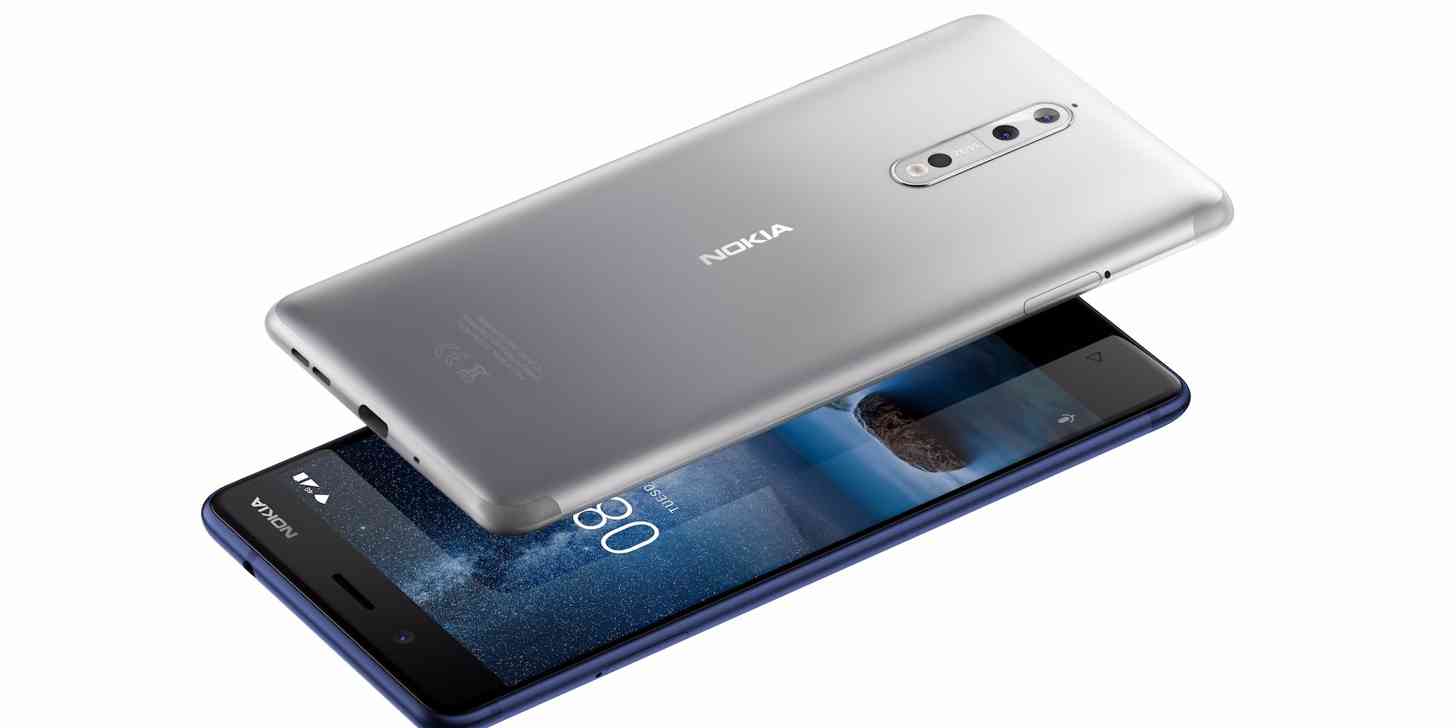
When it comes to mobile, 2017 is already known for several things: slim bezels, lack of headphone jacks, and the return of one beloved brand, Nokia. Although HMD Global Oy, the company that now owns the Nokia brand, has already released a few Nokia devices this year, many have been anticipating the reveal of the flagship device, the Nokia 8, which was announced just a couple of days ago.
I was pretty giddy about the reveal, but as I glossed over the specs, I had to ask myself: Am I giddy because this phone actually stacks up against other flagships, or am I giddy because the name "Nokia" scratches my nostalgic itch? After careful consideration, I would say for the most part the Nokia 8 remains competitive in most areas, but does have some shortcomings.
The Nokia 8 sports a 5.3-inch display with a 2560x1440 resolution, runs on the Qualcomm Snapdragon 835 processor, features 4GB or 6GB of RAM, and has 64 or 128GB of internal storage with microSD support. It runs on a “pure” version of Android 7.1.1 out of the box and houses a 3,090 mAh battery. It charges with USB-C, has a 3.5mm headphone jack, and has an IP54 rating (meaning “splashproof”, not waterproof).
The Nokia 8’s true pride and joy is its cameras, with a 13-megapixel dual camera with ZEISS optics on the back of the device, featuring one 13-megapixel color sensor, one 13-megapixel monochrome sensor, OIS, dual-tone flash, PDAF, and IR sensor. The Nokia 8 also sports a 13-megapixel camera on the front. The Nokia 8 allows and encourages users to take both front-facing and rear-facing photos at the same time, effectively turning the “selfie” into what HMD Global calls a “bothie”, which doesn’t quite roll off the tongue as well.
The Nokia 8 features an all-aluminum back that comes in blue, copper, and silver colors, as well as glossy or matte finishes. Although not necessarily unique from what’s already offered on the market in terms of build, aluminum is definitely a better choice than glass when it comes to structural integrity – especially if HMD Global Oy wants to retain one of the most nostalgic factors of the Nokia brand, which was that Nokia phones were “tanky”. I also happen to think that it looks really nice.
Sporting a 5.3-inch display seems like a good middle-of-the-road decision, especially considering that the Nokia 8 still has decent sized bezels. Some may hold the device’s bezels against it considering how many flagships have (and will) worked towards shrinking their bezels this year, but I think the trend is still in early enough stages for phones with larger bezels to stand a chance.
What remains to be seen is how well the device will sell. With a retail price of €599 ($705), it’s a little on the higher end. It’s higher than some models of the LG G6 and HTC U11, but lower than the Moto Z2, Samsung Galaxy S8, Apple iPhone 7, and presumably significantly cheaper than the Samsung Galaxy Note 8 and Apple iPhone 8 as well. Considering the Nokia brand still has plenty of momentum, a ~$700 asking price doesn’t seem too rash.
With a high-quality camera (assuming), premium specs, pure Android, a decent sized battery, headphone jack, microSD support, and an aluminum build, the Nokia 8 has a lot going for it. Whether those features will make up for its thicker bezels, which people will likely notice when comparing smartphones, is yet to be seen. However, from my perspective, the Nokia 8 looks to be a solid flagship option this year.